Overview
The Gauls are described as the barbarians per excellence in the classical world.
Far from being savages, they had an extensive oral tradition and their metalworking skills were on par if not superior to those of their more urbanized neighbours.
The Celtic society could be described as proto-feudal, where tribal confederations ruled areas centered around fortified towns, called Oppida by the Romans.
This lead however to their greatest weakness: disunity.
At game start the Gauls are embroiled in a perilous civil war against other Celtic tribes and must act quickly before other factions becomes involved and take advantage of their weakness.
In the Senate Campaign with loyalty on, the civil war will become even more severe, with settlements switching between the Gallic and the Celtic tribes.
If things gets desperate (or you want a very different experience), the Gauls can pack up and horde their way to less warlike territories.
The Celtic roster
The Celts are an offensive oriented faction, generally deadly against light infantry but lacking staying power early on.
Their lack of staying power is partially offset by the fanatic gaesatae and the inspiring druids, which will help holding the heavy losses prone line.
Later on, heavy infantry will become available allowing the player to go toe to toe against most western factions.
Celtic longswords are among the deadliest weapons but lack armour piercing, meaning that, while still effective, they won't fare as well against armoured units.
Warband
The basic celtic warband, armed with a short spear and a thureos shield.
Excellent garrison unit and good against light cavalry, those men shouldn't be committed to intense fighting against heavier troops.
While decent fighters, their lack of armour and minimal training means that they are going to take heavy losses and will rout early if not properly supported.
Swordsmen
The iconic Celtic warrior, swordsmen are an excellent flanking infantry, armed with a round shield and a good Celtic longsword.
Along with the basic warband they form the mainstay of any early Celtic army, able to inflict (but also suffer) heavy losses on enemies of the same tier.
Deadly against light infantry, they are vulnerable to missile troops and cavalry due to their low armour.
Slingers
Recruited from light-footed warriors, the slingers are the base long range skirmishers of any Celtic army.
Able to inflict great damage if well positioned, they should be kept out of melee unless as a desperate last move as they won't last long except against similar troops.
Skirmishers
Recruited from the younger warriors, skirmishers are short range missile troops tasked with disrupting enemy formations with their javelins before the regular infantry charge.
As their main protection is a small thureos shield it is unwise to use them in melee.
Noble Spearmen
Recruited among more seasoned warriors and minor Celtic nobility, heavy spearmen are the earliest heavy line troops a Celtic army will get.
Able to hold their own against enemy infantry and cavalry, they can form a shield wall able to pin down any enemy while flanking units inflicts the bulk of the losses.
As reliable heavy infantry, they are most useful when employed against more urbanized armies, where staying power will be needed to win a battle.
Noble Cavalry
The wealthiest nobles of the Celtic tribes forms an heavy cavalry unit, able to charge through many infantry lines.
Armed with lances and some of the finest armour made by Celtic blacksmiths, they are a force to be reckoned with, also being part of late general's bodyguard.
They should, however, avoid charging prepared spearmen and heavy infantry, as their unarmoured horses are bound to be vulnerable if bogged down in melee.
Light Cavalry
Armed with javelins, spear and a small thureos, these light horsemen are a fine cavalry unit.
Best employed against skirmishers, they will throw their javelins to disrupt enemy formations before charging with their spears.
Due to their lack of armour, any wise Celtic lord will avoid sending them in melee, unless the enemy has already been pinned down.
Heavy Swordsmen
After fighting against Roman and Greek armies, many Celtic lords realized the need for heavier shock troops, able to fight prolonged melees.
Heavy swordsmen are a mail-armoured late unit, able to last much longer than the earlier unarmoured unit.
With a large shield and longsword, they keep all fighting skill of a Celtic warrior, making them a powerful contender in the battlefield.
Due to their lack of spears and ranged weapons, they need to be supported against enemy skirmishers and heavy cavalry.
Heavy Cavalry
Celtic nobles formed the heavy cavalry core of Celtic armies and form the bodyguard of early generals.
Armed with mail, spears and shields, they will form a reliable hammer on the battlefield as long as they won't charge against prepared heavy infantry.
Gaesatae
"Naked" fanatic warriors, the gaesatae are perhaps the most frightening unit in the Celtic roster.
Seasoned warriors, religious zeal and drugs means that they will fight to the last, while their javelins and long swords will give them a poweful attack.
However, as a large shield is their only defence, they need to be protected against missile troops or all their prowess will be in vain, like showed in the battle of Telamon.
Druids
Druids played an important role in Celtic society. Part priest and part judge, they were the staple of Celtic oral tradition, passing knowledge and values down the generations.
Especially hated by the Romans they rarely fight directly in battle but can inspire their fellow warriors to great feats of valour.
Mail-armoured, they can hold their own in battle, however their small numbers means that they are best used in the support role, where they can make all the difference between a victory and a rout, especially in early armies.
Chosen Slingers
Seasoned and armoured warriors, these slingers are the best skirmishers money can buy for a Celtic lord.
Years of experience with the sling make them able to inflict losses even to heavy infantry while their longswords and small shields will allow them to fight against lighter enemies if needed.
Celtic Chariots
A form of early shock cavalry, chariots are slowly fading out from Celtic warfare but are still an effective unit when propelry used.
Crewed by a rider and two armoured warriors, they are useful to frighten enemy infantry while peppering them with javelins.
Chariots however are highly vulnerable to skirmishers and must be careful against missile-heavy armies.
Chosen Swordsmen
A true Celtic elite, chosen swordsmen are deadly melee warriors.
True veterans, their combination of mail, longsword and shield makes them able to fight into the thickest and come out victorious against most enemies.
Extremely prized (and expensive) warriors, they still need support against missile troops and cavalry.
Briton Woad Warriors
Woad warriors are northern Celtic swordsmen from the British isles.
While their only "armour" is woad painting on their bodies, they proudly use the old Celtic tradition of severing enemy heads both to show their bravery and scare their enemy.
While vulnerable to cavalry, they are an extremely useful addition to Celtic armies, especially against non-professional armies.
Celto-Hellenic Hoplites
The result of cultural fusion between two vastly different cultures, the Celto-Hellenic hoplites join Greek discipline with Celtic swordsmanship and metallurgy.
Using the looser Iphicratean style, they are quite adept at facing most infantry and cavalry.
While not on par with Macedonians in phalanx warfare, they more than compensate with their longswords, large shields and heavy armour, making them a deadly foe, even when the enemy comes to close fighting.
This level of prowess doesn't come for cheap however, and it will require extensive investment in civic infrastructure before being able to recruit those superb troops.
Special buildings in the Celtic area:
The Circle of Elders represents the tradition of elder rule and instruction. The elders aid in government of the settlement and and also teach the governor about the ways of the tribe.
The Druids' Circle, available only to Celts and Gauls, takes this one step further as the druids are the best educated group in the Celtic world. They aid with governing and teach the governor even more about their world and traditions.
And some of the unique buildings you will find exploring the XC world...
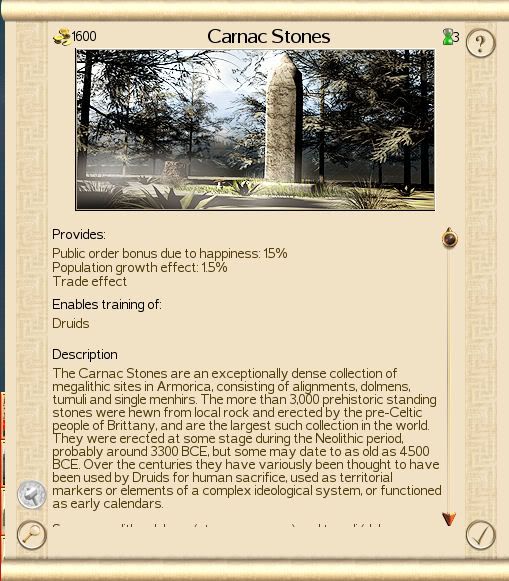
The Celtic society through traits
1) Ethnic traits features of Gauls
All Family members of Gauls are of the Celtic group.
The Celtic characters can be a member of one specific tribe taken from a pool which will expand through adoption and marriage as the faction secures more regions in Celtic world.
2) Barbarian Faction Traits
Gauls are one of the barbarian factions. While their culture could not comprehend the division of knowledge and subjects in the way that the civilized peoples did, it didn't mean that they were ignorant fools.
Barbarian factions have their own holistic way to define the skills and knowledge of true people which are different from the ones needed in more urbanized societies.
3) The Celts
Celts are among the most advanced among barbarians in terms of culture and have their own political structure as they were once all under the Biturix, the "King of the World."
This generates a thirst for glory, waiting for a Great tribe who could restore peace within the Celtic world. Celtic culture can also potentially advance enough to gain access to unique civilized ancillaries after the Marian reform has occurred, but with lower chance to acquire them than when compared to civilized factions.
Celtic factions also have their own set of additional special ancillaries as well.
4) Social Climbers
Celtic society is blessed with equality, but it is complex, giving open opportunities for those who desire to be the first among peers. May the gods bless the appropriate ones on their journey to the top of political career.
5) Barbarian Education System
Barbarians of the north have a different view from more urbanized people about what to learn and how to pass it down the generations.
Due to the nature of oral tradition and their lack of written language, barbarian characters will learn from elders and druids at Elders' Circle, Druids' Circle, Druids' Conclaves, and maybe a bit from temples.
Due to the cultural barrier and prejudice on both sides, they can not send their children to any civilized centers of learning.
Instead, they have their own centers of learning abroad in Cenabum, Anglesey, and Kogaionon, which will teach the wisdom necessary to be a leader among men.
Although Barbarian characters cannot access academies or any other libraries in the same way as their southern neighbours, they will have the potential to learn how to read and write as well as the manners of softer people, which could be useful but also would make their own kind shun them.
This ends the preview, we sincerely hope you enjoyed your first introduction to factions in Extended Cultures 4.
Many thanks to Zarax for writing the bulk of the preview, and to Suppanut for the portion on traits.









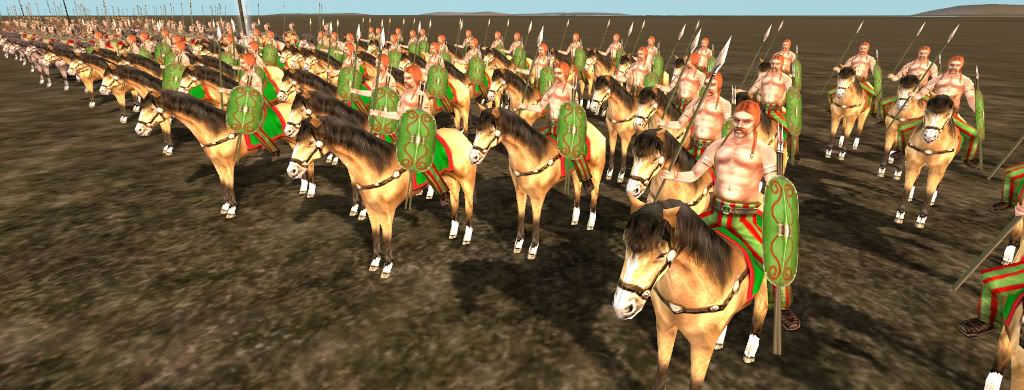

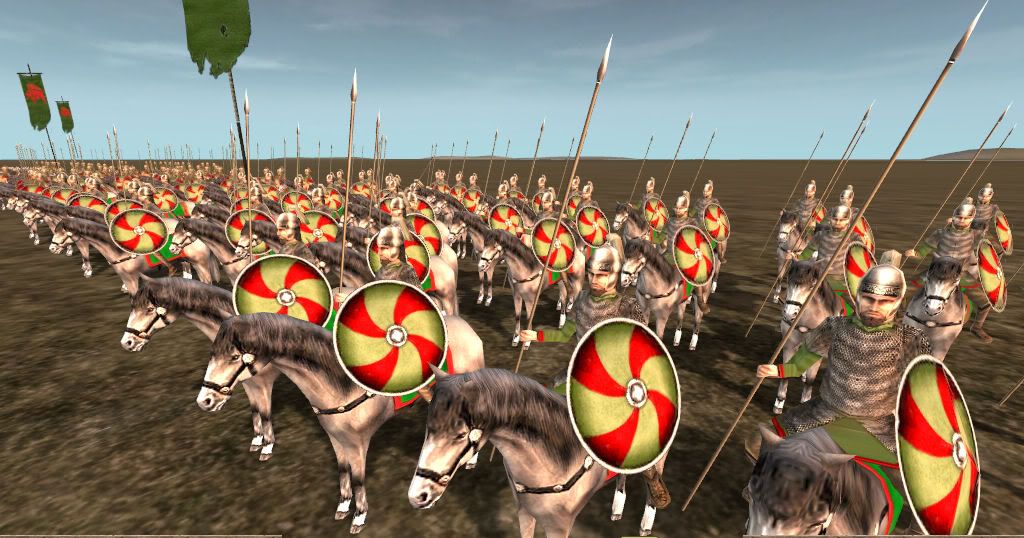
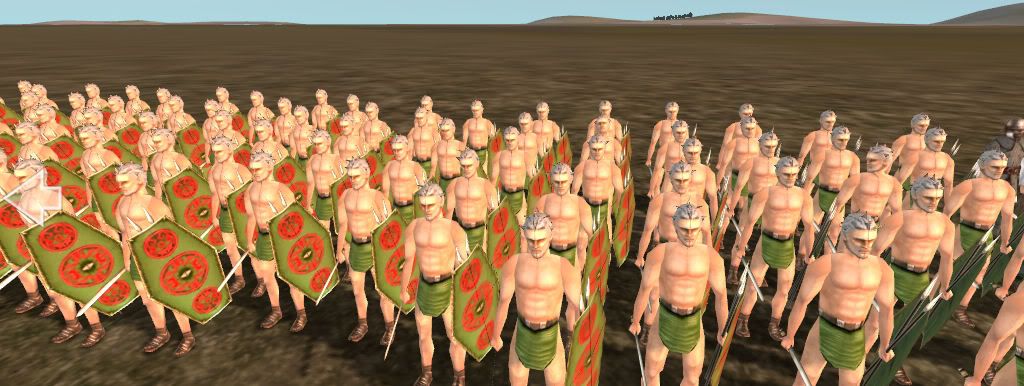

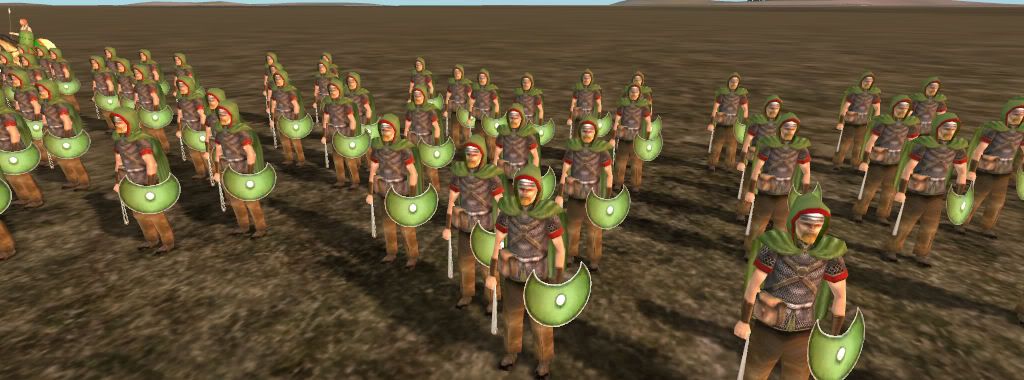



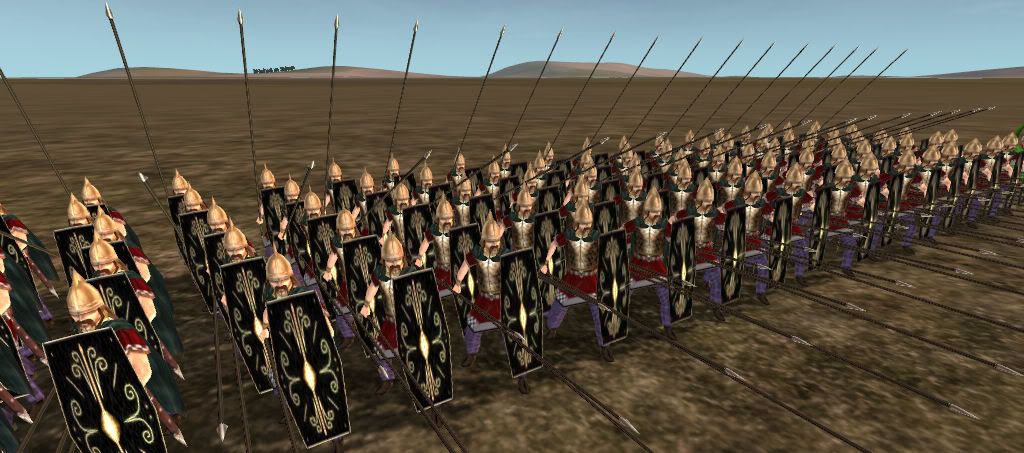
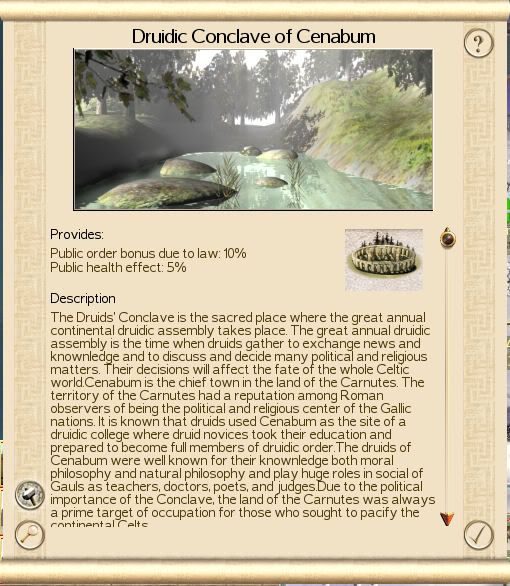



 Reply With Quote
Reply With Quote
















